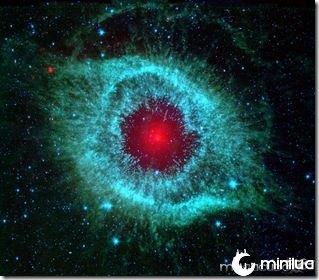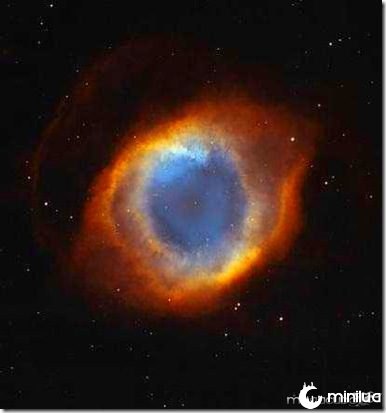 A nebulosa Helix, conhecida entre os astrônomos como “o Olho de Deus” pelas suas semelhanças a um enorme olho (astronomicamente enorme mesmo), foi agora fotografada pelo Telescópio Espacial Spitzer
em infravermelhos, e o resultado é esta fotografia espetacular. As
cores, naturalmente, são geradas por computador, geralmente designadas
‘cores falsas’. Você pode obter uma cópia em alta resolução da imagem no
site oficial do Telescópio Spitzer.
A nebulosa Helix, conhecida entre os astrônomos como “o Olho de Deus” pelas suas semelhanças a um enorme olho (astronomicamente enorme mesmo), foi agora fotografada pelo Telescópio Espacial Spitzer
em infravermelhos, e o resultado é esta fotografia espetacular. As
cores, naturalmente, são geradas por computador, geralmente designadas
‘cores falsas’. Você pode obter uma cópia em alta resolução da imagem no
site oficial do Telescópio Spitzer.Este é o aspecto da nebulosa à luz visível:
 Houve inclusive uma série de emails
que afirmavam que este era mesmo o Olho de Deus e que estava realizando
milagres. A imagem é realmente belíssima, não temos somente “um belo
planeta”, mas também um universo cheio de belezas incríveis e ainda
desconhecidas.
Houve inclusive uma série de emails
que afirmavam que este era mesmo o Olho de Deus e que estava realizando
milagres. A imagem é realmente belíssima, não temos somente “um belo
planeta”, mas também um universo cheio de belezas incríveis e ainda
desconhecidas.Confira abaixo uma animação feita simulando uma visão 3D da nebulosa Helix.
Fonte: http://miguellopes.wordpress.com




